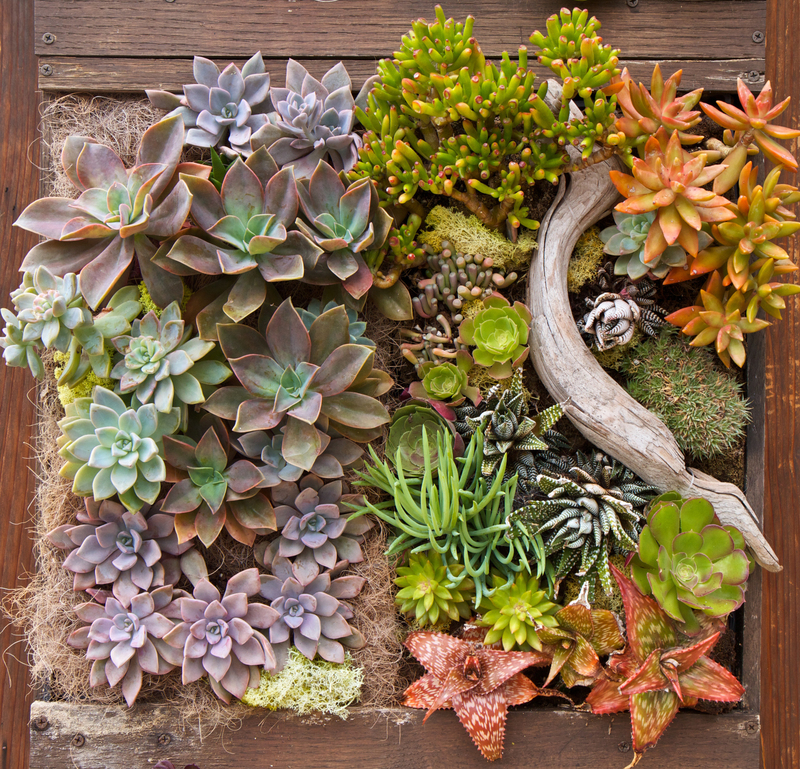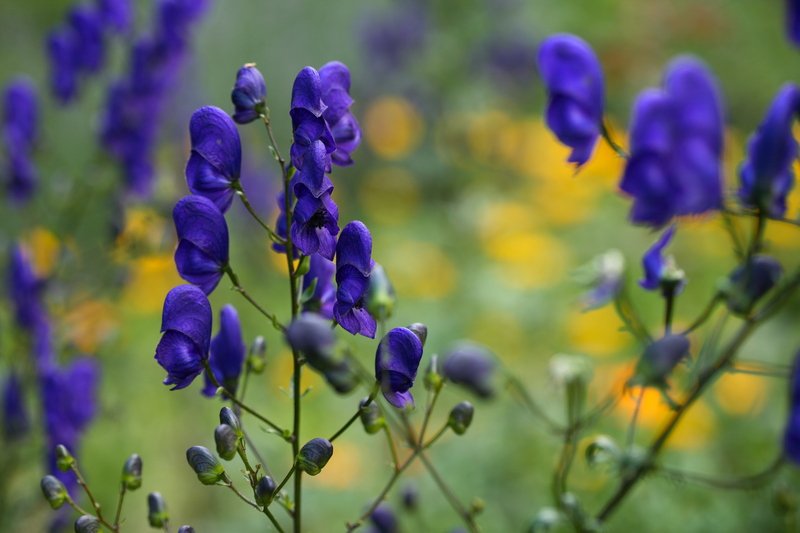Master the Art of Protecting Plants from Winter Frost
Posted on 09/06/2025
Master the Art of Protecting Plants from Winter Frost
Winter frost can be a gardener's biggest challenge, threatening even the hardiest plants with damage or loss. While the colder months bring beauty and rest to many landscapes, they also introduce risks like frostbite, dehydration, and root rot.
If you're passionate about your garden's health and longevity, it's essential to master the art of protecting plants from winter frost. This comprehensive guide will teach you everything you need to know, from practical techniques to expert insights, ensuring that your precious plants survive--and even thrive--through the winter chill.
Why Is Winter Frost Harmful to Plants?
Frost occurs when the temperature drops so low that water vapor in the air freezes onto surfaces, including plant leaves and stems. Frozen water expands, rupturing plant cells and causing irreparable damage.
Key risks posed by winter frost:
- Cellular damage: When plant cells freeze, they burst, leading to blackened or wilted foliage.
- Desiccation: Cold winds and frozen ground make it hard for roots to take up water, leaving plants dry.
- Root injury: Repeated freezing and thawing can harm delicate root systems, especially in young plants or those in containers.
- Delayed growth: Frost-stressed plants have a harder time bouncing back in spring.

Understanding Your Garden's Frost Risk
Before attempting any frost protection methods for plants, you must evaluate your garden's unique situation:
- USDA Hardiness Zone: Know your climate zone. This helps you choose plants adapted to your winters and plan protection accordingly.
- Microclimates: Urban gardens, low-lying areas, or spaces near walls/fences may be warmer or cooler than you expect.
- Plant type: Some, like citrus, succulents, and annuals, are far more vulnerable than others, such as native perennials or evergreens.
Signs and Symptoms of Frost Damage
Catch problems early by recognizing frost injury symptoms:
- Blackened, limp, or mushy leaves
- Wilting that doesn't improve with watering
- Splitting bark or stems
- Stunted spring regrowth
Essential Strategies for Protecting Plants from Frost
1. Select the Right Plants
Your first line of defense is plant selection. Favor species that are hardy for your region. For tender favorites, plan to provide extra winter care.
2. Choose the Right Location
Location is key in mitigating frost risk. Here's how you can optimize your garden's microclimate:
- Plant near south-facing walls to absorb and radiate heat overnight.
- Avoid frost pockets--these are low areas where cold air settles easily.
- Cluster potted plants together for mutual warmth.
3. Monitor Weather Forecasts
Stay vigilant! Frost often arrives unexpectedly. Install an outdoor minimum-maximum thermometer and make a habit of checking the forecast. Apps and garden calendars help predict likely frost nights.
Effective Methods for Frost Protection
When cold snaps threaten, deploy these tried-and-true winter plant protection techniques:
Mulching: Nature's Blanket
Mulching insulates the soil and prevents temperature fluctuations that can damage roots. To master plant mulching for winter:
- Apply 2-4 inches of organic mulch (bark, leaves, straw) around the base of woody plants.
- Keep the mulch a couple of inches away from stems and trunks to prevent rot.
- For tender perennials, pile mulch over crowns after the ground freezes for added insulation.
Covering and Wrapping Techniques
Physical barriers shield your plants from frost and icy winds.
- Frost cloths and row covers: Use breathable fabrics (not plastic!) to trap warmth radiating from the ground at night. Lay covers in the evening and remove in the morning for air circulation.
- Burlap wraps: Wrap evergreens or shrubs lightly to prevent drying out from winter winds.
- Cloche or cold frames: Protect small or potted plants under portable, transparent covers for a mini greenhouse effect.
- Recycled solutions: Even old sheets, cardboard boxes, or flowerpots (placed upside down) can serve in a pinch.
Watering: A Counterintuitive Secret
Many gardeners overlook proper watering in winter. Well-hydrated soil holds heat better, helping roots resist freezing. On dry winter days:
- Water deeply during the day before a frost is expected. Avoid wetting the foliage; focus on the roots.
- For container plants, check soil moisture weekly--pots dry out faster.
Wind Protection and Shelter
Cold winds can be just as damaging as frost. Buffer your plants with:
- Windbreak structures such as fences or temporary screens made from sacking or netting.
- Strategic planting behind buildings, shrubs, or existing hedges.
Heaters and Lights for Extra Warmth
In urgent situations, a little extra warmth can save the day:
- Hang old-style Christmas lights (not LEDs) around sensitive trees or shrubs--the tiny bit of heat is often enough to keep frost at bay.
- Outdoor-safe heat lamps or heated propagation mats (especially in greenhouses or cold frames) provide targeted warmth.
- Never use open flame or unsafe heating methods--they pose fire risks.
Special Considerations for Container Plants
Protecting potted plants from frost requires extra diligence:
- Group pots together and place near sheltered walls to reduce heat loss.
- Wrap pots in bubble wrap or burlap to insulate the root ball.
- Move very delicate plants indoors, to garages, or into greenhouses for the coldest weeks.
- Raise pots off cold slabs with "pot feet" or bricks to promote drainage and prevent root freezing.
Common Frost Protection Mistakes to Avoid
Even experienced gardeners sometimes make errors:
- Delaying protective measures: Waiting until after frost hits can lead to irreparable damage--be proactive.
- Using non-breathable covers: Plastic tarps trap moisture and cause rot or fungus. Always use breathable materials.
- Over-pruning: Prune shrubs and trees in mid-winter only if absolutely necessary; old leaves and branches provide valuable insulation.
- Neglecting soil health: Healthy, well-mulched soil is naturally more resilient against frost.
How to Revive Frost-Damaged Plants
If you notice signs of frost damage, don't panic. Many plants recover well if given time and proper frost recovery care:
- Resist the urge to prune damaged parts immediately. Wait until spring, as dead growth can protect living tissues from further freezes.
- Resume watering and mulching as weather warms up.
- Fertilize only after new growth appears, supporting the plant's natural bounce back.
FAQs: Protecting Plants from Winter Frost
-
When should I start winterizing my garden?
Begin preparations in late autumn, before the first forecasted frost in your area. -
Which plants are most at risk?
Tropical plants, succulents, young perennials, annuals, and container plants are generally most vulnerable. -
Can I use plastic sheeting to cover plants?
Avoid it! Plastic does not breathe and can worsen frost damage. Opt for fabric or purpose-made frost covers. -
How long should I leave on frost covers?
Covers go on in late afternoon before a freeze and should be removed in the morning after temperatures rise to promote airflow and avoid disease.

Plan for Success: Maintaining Your Garden All Year Round
The best gardeners are consistently proactive. Follow this annual rhythm to master plant care during winter:
- Early Fall: Clean up, cut back annuals, mulch, and prepare covers in advance.
- Late Fall: Finish mulching and protect vulnerable plants and containers.
- All Winter: Monitor weather, adjust covers, water during dry spells, and check for any stress or disease.
- Spring: Remove mulching slowly, prune any dead materials, and reward survivors with compost and balanced fertilizer.
Conclusion: Become a Frost Protection Expert
By understanding your garden, choosing the right plants and locations, and applying a combination of mulching, covers, watering, and wind shelter, you can successfully defend your landscape from the harshest winters.
Mastering the art of protecting plants from winter frost not only saves time and money, but also ensures years of healthy, vibrant growth for flowers, fruits, vegetables, and ornamental shrubs.
Stay alert, be prepared, and invest in proactive care. Each winter provides new learning opportunities--embrace them, and your garden will become more resilient each year.
Ready to protect your plants from winter frost? Take action with these expert strategies and watch your garden flourish, season after season.

